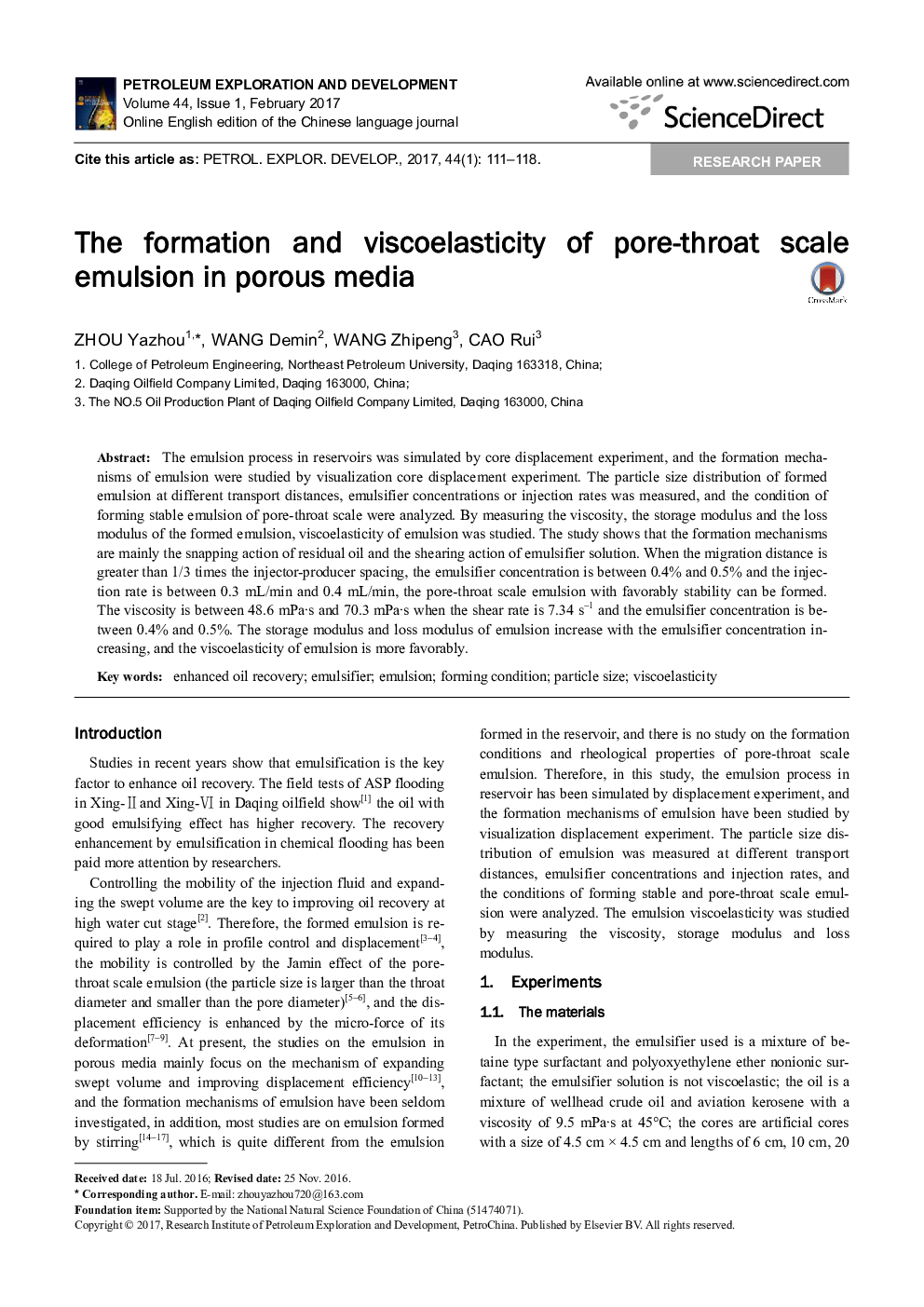| Article ID | Journal | Published Year | Pages | File Type |
|---|---|---|---|---|
| 8912298 | Petroleum Exploration and Development | 2017 | 8 Pages |
Abstract
The emulsion process in reservoirs was simulated by core displacement experiment, and the formation mechanisms of emulsion were studied by visualization core displacement experiment. The particle size distribution of formed emulsion at different transport distances, emulsifier concentrations or injection rates was measured, and the condition of forming stable emulsion of pore-throat scale were analyzed. By measuring the viscosity, the storage modulus and the loss modulus of the formed emulsion, viscoelasticity of emulsion was studied. The study shows that the formation mechanisms are mainly the snapping action of residual oil and the shearing action of emulsifier solution. When the migration distance is greater than 1/3 times the injector-producer spacing, the emulsifier concentration is between 0.4% and 0.5% and the injection rate is between 0.3 mL/min and 0.4 mL/min, the pore-throat scale emulsion with favorably stability can be formed. The viscosity is between 48.6 mP·s and 70.3 mP·s when the shear rate is 7.34 sâ1 and the emulsifier concentration is between 0.4% and 0.5%. The storage modulus and loss modulus of emulsion increase with the emulsifier concentration increasing, and the viscoelasticity of emulsion is more favorably.
Related Topics
Physical Sciences and Engineering
Earth and Planetary Sciences
Geochemistry and Petrology
Authors
Yazhou ZHOU, Demin WANG, Zhipeng WANG, Rui CAO,
